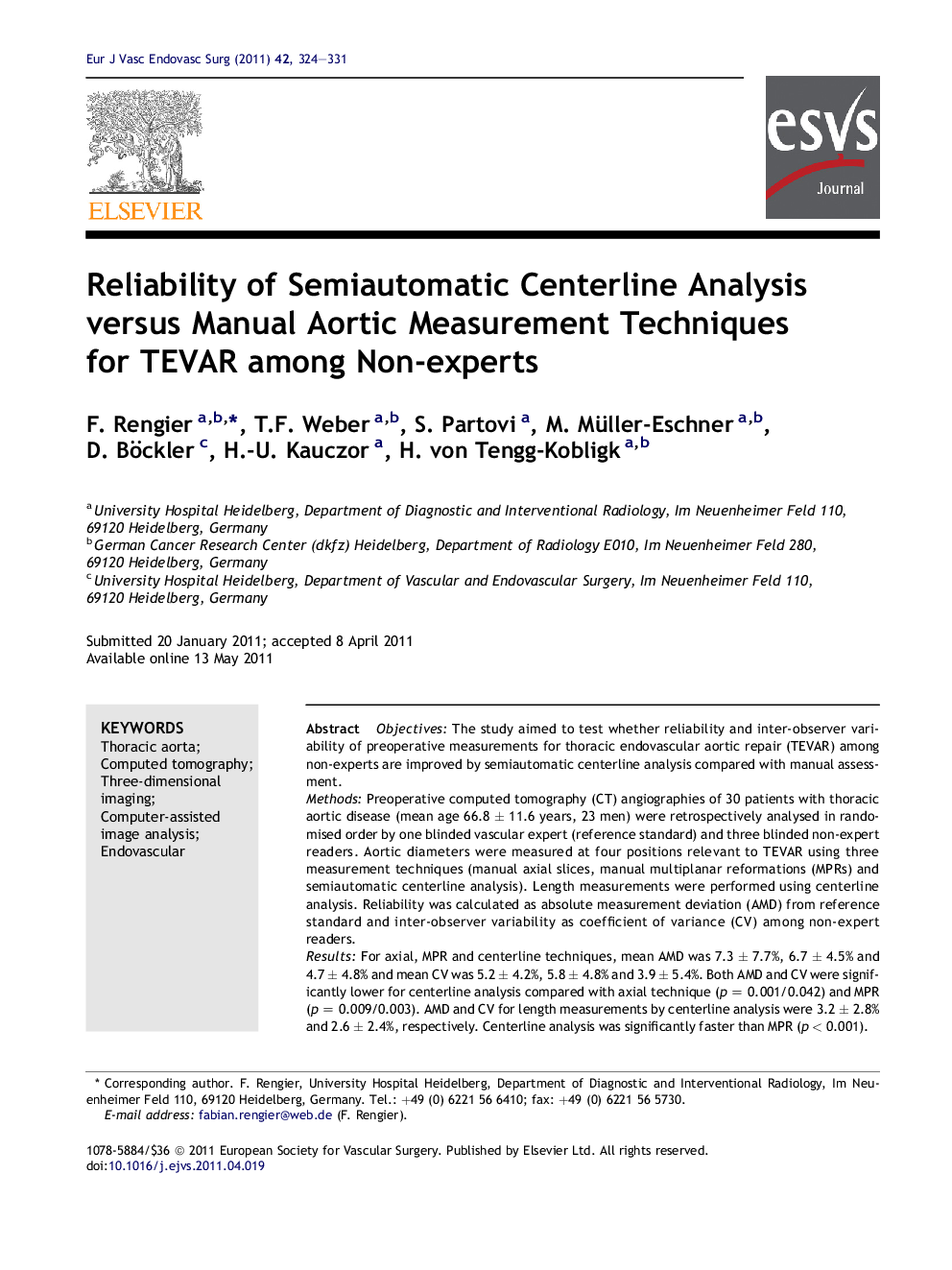| Article ID | Journal | Published Year | Pages | File Type |
|---|---|---|---|---|
| 2912269 | European Journal of Vascular and Endovascular Surgery | 2011 | 8 Pages |
ObjectivesThe study aimed to test whether reliability and inter-observer variability of preoperative measurements for thoracic endovascular aortic repair (TEVAR) among non-experts are improved by semiautomatic centerline analysis compared with manual assessment.MethodsPreoperative computed tomography (CT) angiographies of 30 patients with thoracic aortic disease (mean age 66.8 ± 11.6 years, 23 men) were retrospectively analysed in randomised order by one blinded vascular expert (reference standard) and three blinded non-expert readers. Aortic diameters were measured at four positions relevant to TEVAR using three measurement techniques (manual axial slices, manual multiplanar reformations (MPRs) and semiautomatic centerline analysis). Length measurements were performed using centerline analysis. Reliability was calculated as absolute measurement deviation (AMD) from reference standard and inter-observer variability as coefficient of variance (CV) among non-expert readers.ResultsFor axial, MPR and centerline techniques, mean AMD was 7.3 ± 7.7%, 6.7 ± 4.5% and 4.7 ± 4.8% and mean CV was 5.2 ± 4.2%, 5.8 ± 4.8% and 3.9 ± 5.4%. Both AMD and CV were significantly lower for centerline analysis compared with axial technique (p = 0.001/0.042) and MPR (p = 0.009/0.003). AMD and CV for length measurements by centerline analysis were 3.2 ± 2.8% and 2.6 ± 2.4%, respectively. Centerline analysis was significantly faster than MPR (p < 0.001).ConclusionsSemiautomatic centerline analysis provides the most reliable and least variable diameter and length measurements among non-experts in candidates for TEVAR.
